Which emperor paid the most attention to clothing in ancient Chinese history? Then Zhu Yuanzhang, the emperor of the Ming Dynasty, must be on the list. After the founding of the state, Zhu Yuanzhang issued an edict on the restoration of the ancient clothes and crowns, which is about the restoration of the clothes and crowns in the Tang system and the old Chinese. And he personally participated in the improvement of the clothing system.
During Zhu Yuanzhang's 31 years in office, the clothing system has been revised and supplemented many times. The clothing system is detailed in terms of fabric, style, size and color. And it regulates the clothing of people of various statuses and identities throughout the country. What's more, its implementation was guaranteed by state coercion. To be arrested for wearing the wrong clothes? This is not a joke at the beginning of the Ming Dynasty.
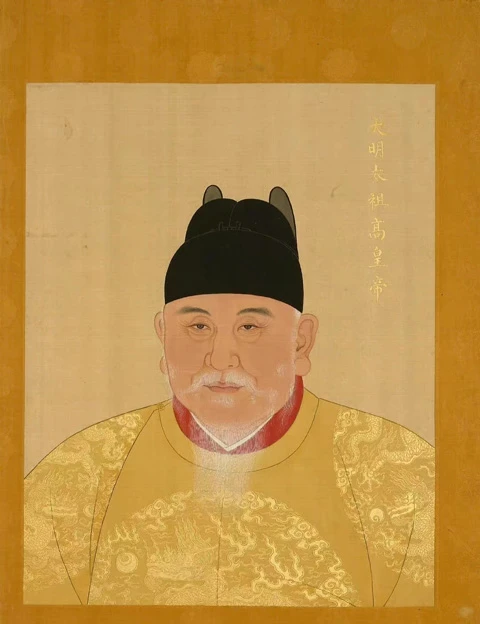
Zhu Yuanzhang
The top-down imperial ban cannot prohibit the awakening of the people's own consciousness and the pursuit of beauty. After the middle of the Ming Dynasty, clothing became more and more luxurious, the official clothing ban was useless, and the art of clothing has shown a prosperous scene of promoting personality and pursuing new and seeking differences.
The development of traditional hanfu clothing in the middle and late Ming Dynasty not only inherited the essence of traditional clothing in the Tang and Song Dynasties, but also absorbed the novel and gorgeous clothing culture of the dynasty. Driven by textile science and technology, it presents a graceful, luxurious, and dignified style.
If the Han, Tang, and Ming constitute the main characteristics of the traditional hanfu clothing history of the Chinese nation, then the clothing of the Ming Dynasty is the masterminator of ancient Chinese clothing culture. Let's follow ArtMoment, the traditional culture research club, to learn more about the shape of the Ming Dynasty dress.
Yijin: the beautiful on the neck
Speaking of the clothes of the Ming Dynasty, the unique Liling of the Ming Dynasty has to be mentioned.
Liling
Liling (立领, vertical collar), also known as Shuling (竖领), is unique to the Ming Dynasty and is the most representative collar style in the middle and late Ming Dynasty.
Compared with the Jiaoling (交领) that has a long history, how did Liling be born in the Ming Dynasty and once become a new favorite? The secret is hidden on a small button.
Liling can be sewn with two buttons on the neck. If this button is made of gold, silver, or even gemstones, it is the most eye-focused in the whole dress. It not only looks elegant, but also serves as a shining finishing touch. What's more, if it's a Liling Duijin Shan (立领对襟衫, vertical collar lapels shirt), it can be sewn with seven buttons.
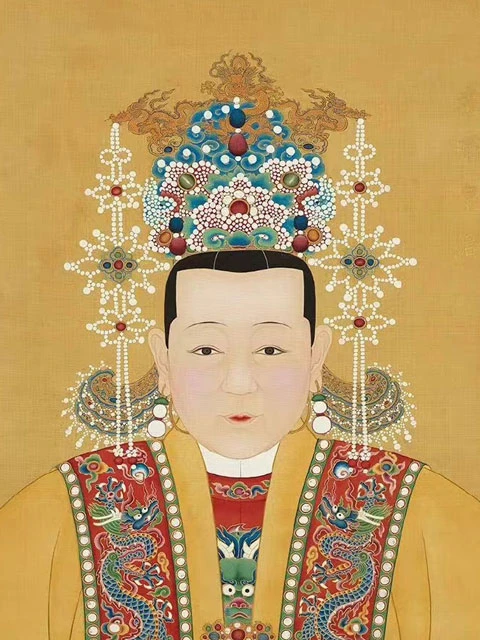
In addition to buttons, the Liling makes the neck closer to the back, and also highlights the slenderness of the neck. According to the unearthed cultural relics and portraits, there are basically two forms of Liling hanfu in the Ming Dynasty.
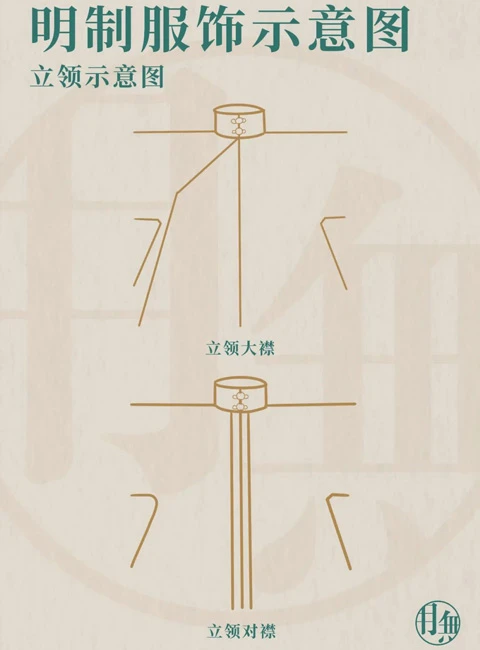
Liling Dajin & Liling Duijin
Liling Dajin (立领大襟): the edge of the collar and lapel is not decorated, and the shape is simple and smooth, generally has 3-4 sets of lace-ups, which are tied under the armpit.
Liling Duijin (立领对襟): the two lapels in the middle are facing each other, straight up and down, usually tied with lacing or buttons. If buttons are used, they are generally closed by three, five, or seven pairs of buttons.
Sometimes the Liling will also be folded to form a kind of unique collar: Fanling (翻领).
In the Ming Dynasty, there was not only a kind of lapel and collar combination like Liling. Although a strict clothing hierarchy was established in the early Ming Dynasty, the commodity economy flourished in the middle and late Ming Dynasty, and many people's ideas and value orientations changed.
Under this influence, the aesthetics of clothing also changed from simple, single, fixed and orderly in the early Ming Dynasty to rich, luxurious and unique. Not only are the clothing shapes diverse, but also the collar style is becoming richer.
In addition to the Liling, there are roughly the following types of lapels and collars combined in the Ming Dynasty.
Jiaoling
Jiaoling (cross collar) is the longest-used collar type of Chinese clothing. It is the iconic collar shape of hanfu. The Chinese character "衣 (clothing)" evolves with the image of the cross collar. When wearing Jiaoling style hanfu, the left and right lapels are crossed on the chest. According to the different overlapping directions, they can be divided into Zuoren and Youren.
- Zuoren (左衽): the lapel is covered from right to left, and the ancient northern aliens advocate the Zuoren, most of which are the clothes of ethnic minorities. In addition, in the traditional customs of the Han nationality in ancient times, the clothes of the deceased (graveclothes) used Zuoren, to show the difference between Yin and Yang.
- Youren (右衽): the lapel is covered from left to right (the collar is in the shape of the letter "y"), and it was more common in the clothing of the Han nationality.
In the early Ming Dynasty, some of the portraits maintained the form of Zuoren, while it was gradually abandoned in the middle and late Ming Dynasty.
Yuanling
Before the Han and Wei Dynasties, the Yuanling (round collar, 圆领) was more popular in the Western Regions, and then introduced into the Central Plains. By the Sui and Tang Dynasties, the Yuanling officially became a regular uniform, which everyone could wear.
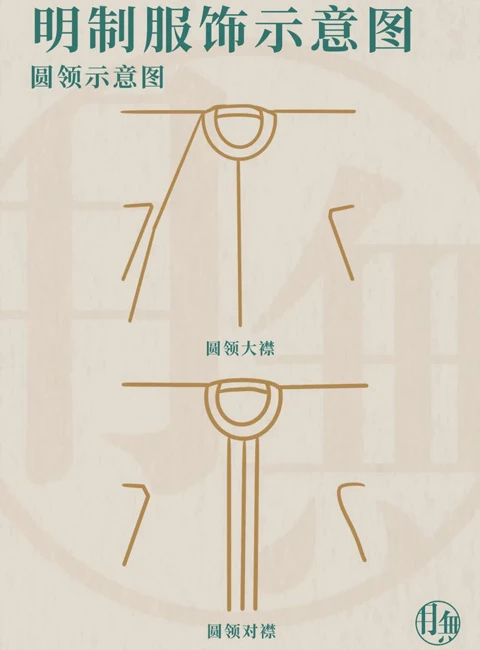
Yuanling Dajin & Yuanling Duijin
Ming Dynasty clothing inherits the legacy of the Sui and Tang Dynasties, and both men and women could wear Yuanling clothing styles. There are also two styles of Yuanling clothing:
Yuanling Dajin (圆领大襟): generally, buttons are decorated near the shoulder to fix the Dajin. The Yuanling Dajin in Ming Dynasty is mostly a Shanao (衫袄).
Yuanling Duijin (圆领对襟): the left and right lapel are symmetrical. They are not superimposed, and are closed with buttons. Or use buttons at the neckline and close with a woven belt at the body. The Yuanling Duijin in Ming Dynasty is mostly a short Shanao, half-sleeved or sleeveless Bijia.
In the Ming Dynasty, when wearing Yuanling clothing, usually, the collar of Zhongyi will be exposed, making the neck more layered.
Fangling
The Fangling (方领) is also a characteristic collar style of the Ming Dynasty. Its left and right collar corners are square, and the openings in the middle of the neckline are separated, connected vertically to the left and right lapels respectively. At the same time, there are edges on both sides. When wearing, the left and right sides are not overlapping, but parallel, with buttons.
The neck of the Fangling Duijin Ao is wide and comfortable to wear. It is usually worn as a coat, and usually accompanied by vertical or cross collar clothes, revealing the exquisite neckline.
The Fangling's cultural relics unearthed are generally Ao and Bijia. Such as the Fangling jacket unearthed in Ming Dingling, can clearly see its shape.
The lapels is an important part of clothing, in addition to the practical function of preventing cold and keeping warm, an appropriate collar can bring a very beautiful visual effect.
In China's traditional clothing culture, collar structure occupies a very important position. The collar structure usually restricts the shape of the lapels. In the long historical development, the collar and lapels style with Chinese characteristics has gradually formed.
Mamian Qun
What is a Mamian Qun?
Simply put, it's a skirt that is a flat surface (no pleated) from the front, and pleated on both sides. There are four skirt doors in the front and back of the Mamian Qun, and each two are overlapping, and the front and back are symmetrical. The outer skirt door is decorated with patterns, which often adopts rich auspicious patterns. The ancient royal family used to dragon Mang patterns and so on, showing the nobleness of identity and expressing peace and joy.
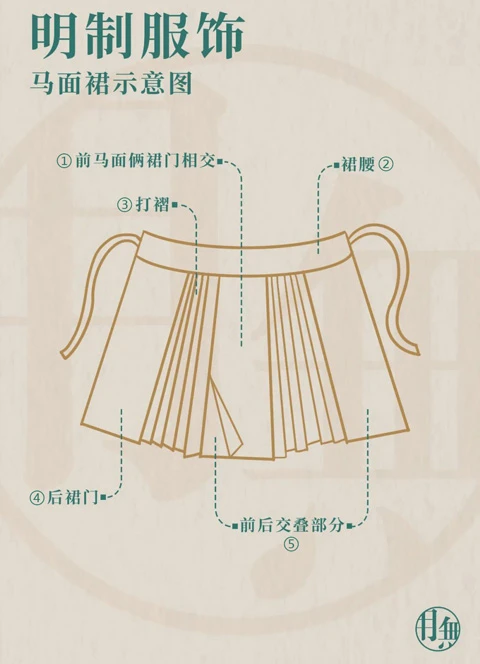
①Two Mamian overlapping in the front; ②Skirt waist; ③Pleated; ④Back skirt door; ⑤When worn, the front and back skirt doors overlap.
Why is it called Mamian?
Mamian in Mamian Qun does not refer to the "Ox-Head and Horse-Face (two guardians of the underworld in Chinese mythology)". The original record of Mamian in the literature was in the "History of Ming Palace": "Yisan (曳撒), the back lapels is connected, and there is Bai on both sides. The front lapel is divided into two parts, and there are Mamian pleats below, extending to both sides.
“曳撒,其制后襟不断,而两傍有摆,前襟两截,而下有马面褶,往两旁起。”
In fact, there is another saying that "Mamian" is a term derived from architecture, which refers to an ancient Chinese defensive architectural structure. It is a trapezoidal pier protruding from the wall at equal distances, which is conducive for defenders to attack enemies from the side and form a clamping momentum.
Looking at the Mamian skirt from afar, the front of the skirt is combined with the pleated on both sides, which is indeed very similar to the architectural structure of the Mamian. As for when and why the vocabulary in the architecture is related to clothing, it is unknown for the time being.
Speaking of the history of Mamian Qun, can be traced back to a skirt called "Xuan Qun" in the Song Dynasty. The Xuan Qun is a functional skirt designed for women in the Song Dynasty to facilitate riding donkeys. The Xuan Qun developed into the Ming Dynasty and gradually formed a Mamian Qun.
Mamian Qun has become popular all over the country in Ming Dynasty, from the empress to the ordinary people, almost everyone wears, but according to different classes, the texture, decoration, and color of the horse-face skirts are different.
The Mamian Qun is decorated with a variety of meanings, embroidered with dragon and phoenix patterns, symbolizing auspicious and beautiful marriage. Embroidered with plant patterns, peonies represent wealth and wealth, and chrysanthemums represent longevity. The elegant and gorgeous Mamian skirt is not only beautiful, but also better than its cultural connotation.
Dressing Guide of the Ming Dynasty Hanfu
For ancient Chinese clothing, many people have the impression that "wearing Tang, Song hanfu in hot weather and Ming Dynasty hanfu for cold weather". But what do ancient wear in other seasons? So, this is actually a false solidification impression.
Ming Dynasty Hanfu ≠ Winter Clothing
The reason for this impression may because of dramas. Most of the Ming Dynasty hanfu in dramas are dominated by winter clothing, which seems to deliberately create the cold weather of the Ming Dynasty.
Some people also put forward the view of the "Little Ice Age". In fact, the concentration of the Small Ice Age is more extreme weather, which is not only extremely cold in winter, but also hotter than usual in summer. Moreover, the Little Ice Age did not accompany the whole Ming Dynasty, mainly at the end of the Ming Dynasty and the beginning of the Qing Dynast.
Therefore, the Ming Dynasty also had an abundance of summer hanfu attire styles.
Women’s Ming Dynasty Hanfu-Summer
On private occasions in summer, the clothes of women in the Ming Dynasty are very cool. Wear a separate Moxiong on the upper body, light and thin Hanshan on the outside, or only with a Shashan. However, in contrast, the lower body is more conservative.
Underwear
Underwear was called "Zhuyao (主腰)" and "Moxiong (抹胸)" in the Ming Dynasty. Its materials were mainly yarn, Ling, Luo, and other fabrics.
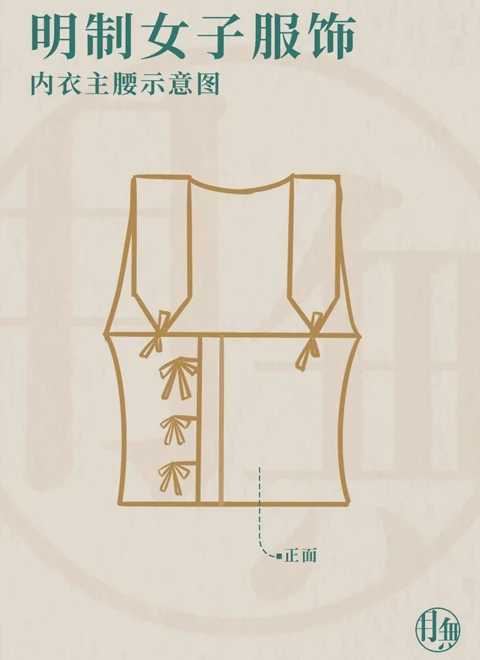
Zhuyao
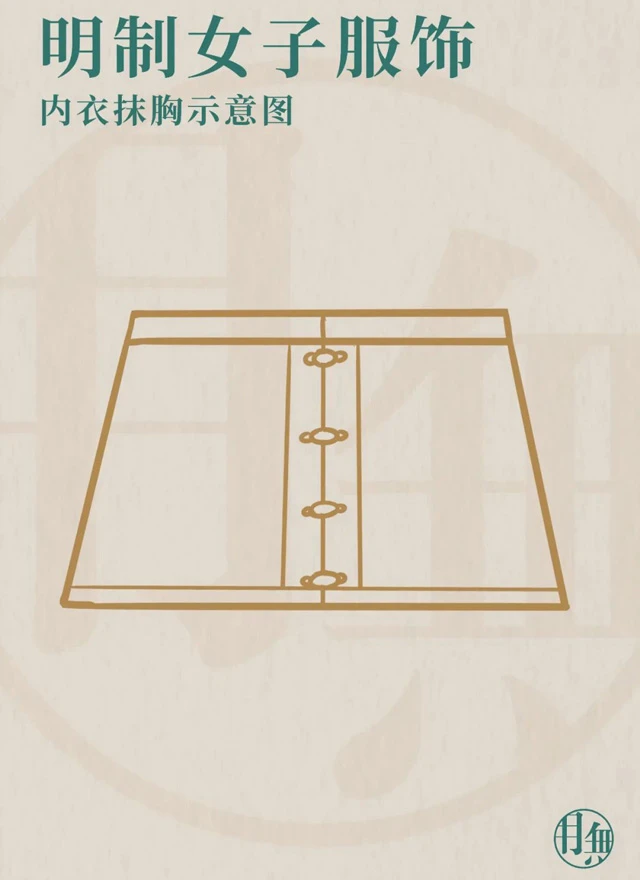
Moxiong
One of the most common shapes of the Zhuyao in the Ming Dynasty is to make underwear that are equal to the chest circumference and grow up to the waist and abdomen, and then surround the chest. The opening is forward or backward, and the opening is decorated with a row of buttons or lace-ups for fixing.
Hanshan
Hanshan (汗衫), originally known as "Zhongyi" and "Zhongdan", is a kind of clothing made of yarn and silk.
It is said that the name of the Hanshan began with Liu Bang. According to historical records: "Liu Bang returned to camp after a battle with Xiang Yu and found that his shirt had all been soaked with sweat, so he laughed and called it 'Hanshan'. "
On a hot summer day during Ming Dynasty, just wearing a "Hanshan" at home can feel cool and comfortable. If need to go out, it also need to put on another jacket. The Ming summer jacket is light and transparent, but with the existence of a "Hanshan", covering the Moxiong, it is also polite.
Xiku
The women's underwear of the Ming Dynasty can't be separated from trousers, Xiku (膝裤), and skirts.
Generally, the trousers worn inside are slightly shorter than skirts. Put a pair of Xiku outside the trousers, just connecting the distance between the skirt and the shoes. Xiku can not only cover simple socks, but also be decorated with popular patterns, which is more exquisite and beautiful.
The wear method is trousers first, then tie the Xiku under the knees outside the trousers, and finally tie the skirt outside the trousers.
Shan
The Shan (衫, shirt) made of gauze is light and refreshing. Wearing a breathable Shan and a long skirt in summer is a classic summer dressing style since Ming Dynasty.
In the middle and late Ming Dynasty, the length of women's shirts gradually became the same as men's. Fashionable women's shirts were gentle, fresh, and elegant, becoming an indispensable item in Ming women's wardrobe.
Bijia
Bijia is a sleeveless Duijin shirt with slits on both sides.
The name Bijia began in the Yuan Dynasty. In fact, it had a certain relationship with the Tang Dynasty Banbi and the Song Dynasty Beizi. Bijia is not subject to the orders and season, and is deeply loved by the people of the Ming Dynasty.
Although the practicality of Bijia does not seem to be so strong, the decoration effect is very good. It can not only look tall and thin, but also enhance the sense of hierarchy of modeling. It is a must-have for Ming women's daily life.
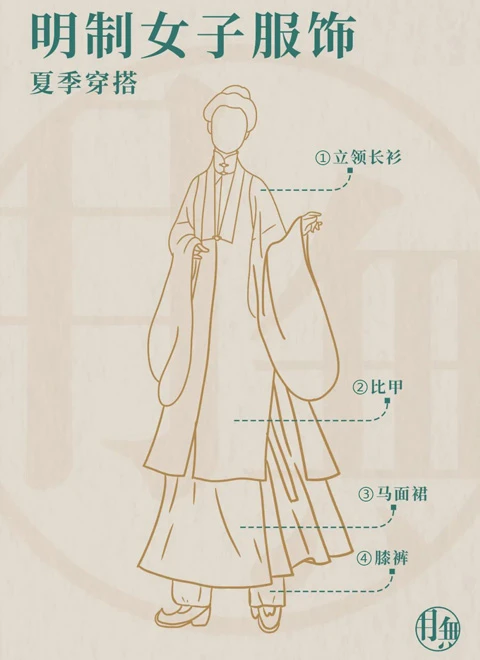
Ming Dynasty Hanfu summer wear: ①Liling Changshan (vertical collar long shirt); ②Bijia; ③Mamian Qun; ④Xiku.
Women's Ming Dynasty Hanfu-Winter
Ao
In the Ming Dynasty, the unlined single garment was generally called "Shan", and the lined one was called "Ao (袄, coat)".
In the middle and late Ming Dynasty, women's coats were diverse and classified according to the length of clothes, including long, medium, and short coat. The coat can be worn both inside and outside, but in terms of materials, the coat used for internal wear will use softer fabric, and the pattern of the fabric is simpler.
According to the season, Jiaao for spring and autumn, and Mianao and Piao for colder winter.
- The Jiaao (夹袄) refers to an Ao with a layer of lining and a total of two layers on the surface and inside.
- The Mianao (棉袄) is an Ao with cotton between the surface and inside.
- The Piao (皮袄) refers to Ao made of animal fur. The commonly used materials are mink, fox, silver rat skin, and so on. It is mainly in the form of a Duijin.
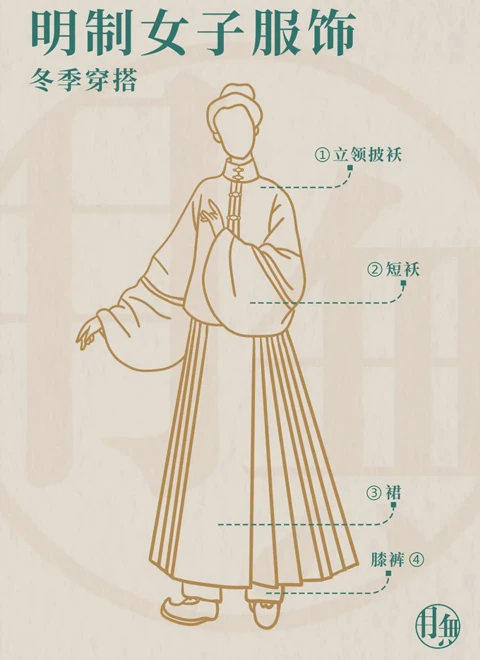
Ming Dynasty Hanfu winter wear: ① Liling Piao; ②Duan Ao (short coat); ③Skirt; ④Xiku.
Men's Ming Dynasty Hanfu
In the Ming Dynasty, men and women wore extremely rich casual clothes in their daily idle life, with a variety of materials, which would change according to the needs of seasons and functions. Men's casual wear styles mainly include Daopao, Zhishen, Tieli, and so on.
Tieli
The Ming Dynasty can be said to be the last dynasty of Chinese men wearing skirts. Tieli is cut up and down on the front and back lapels, with pleats below the waist. It looks like a pleated dress with a slit on the left and back.
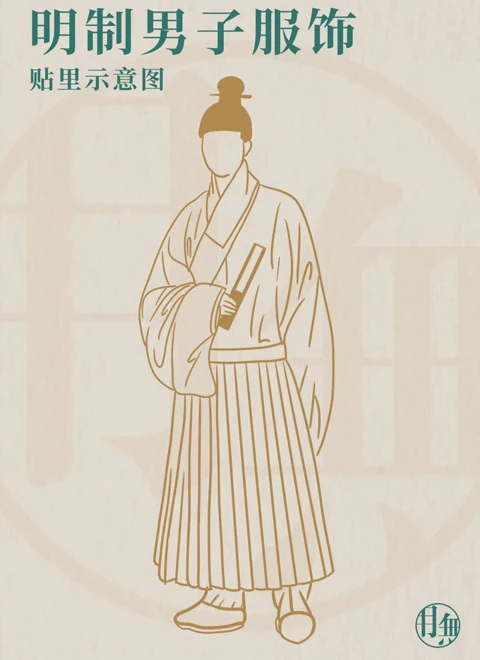
Tieli
Perhaps the pleated in Tieli can make the wide hem of the robe slightly outward and look dignified and steady, so it is deeply loved by the people of the Ming Dynasty. One of the most famous cultural relics handed down from Ming Dynasty costumes is this Feiyu Tieli.
Daopao
The cutting method of the Daopao is Tongcai system, Zhiling, Youren Dajin. The collar is often inlaid with white or plain collars, tied with a lace-up knot, and split at the sides of the bodice.
The hem of the Daopao is made by pleating and stitching. It is folded back and fixed on the inner side of the back lapel. Such a structure can have a good covering effect, so that the trousers in it will not be exposed, which is easy to move. At the same time, it also adds a little elegance to the wearer.
Zhishen
Zhishen's characteristics are very similar to the Daopao. There is a straight collar and a hem on both sides, and the difference is that the hem of Daopao is placed inside and the hem of Zhishen is placed outside.
Zhishen is one of the basic styles of men's clothing in the Ming Dynasty, widely used as a casual wear by all the emperors to the normal people.
The world is impermanent, and nothing can never fall. The former glorious costumes gradually bid farewell to their stage with the changes of the times. And the joys, sorrows, or patriotic feelings that used to be carried on clothes have not disappeared, but are hidden in hidden corners. Time is a very interesting thing, it takes everything away and leaves clues in the cracks, making people can’t help themselves to search for those historical truths.
Literature, architecture, clothing, and these cultures that accompanied the birth of dynasties did not disappear with the collapse of dynasties. They witnessed history and stayed to show us. We will never get to the Ming Dynasty, but we can see the past glory of the great Ming Dynasty from the cracks in history.
More about Ming Dynasty costumes you may like:
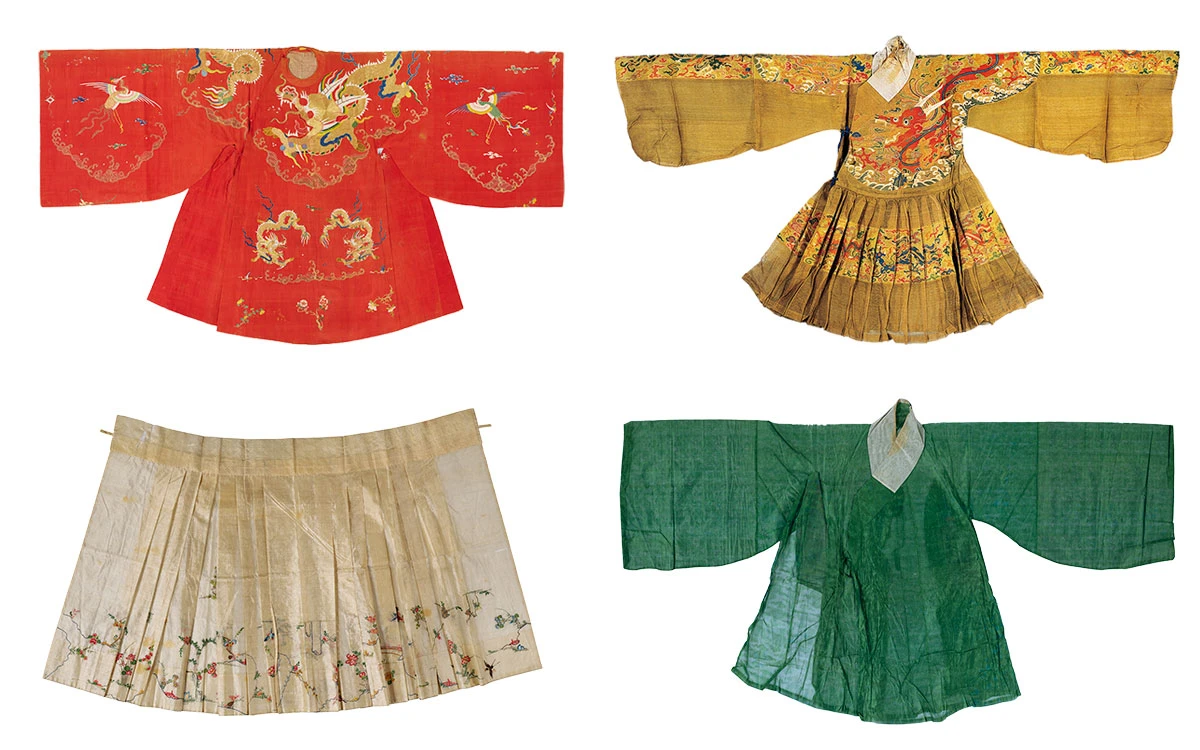
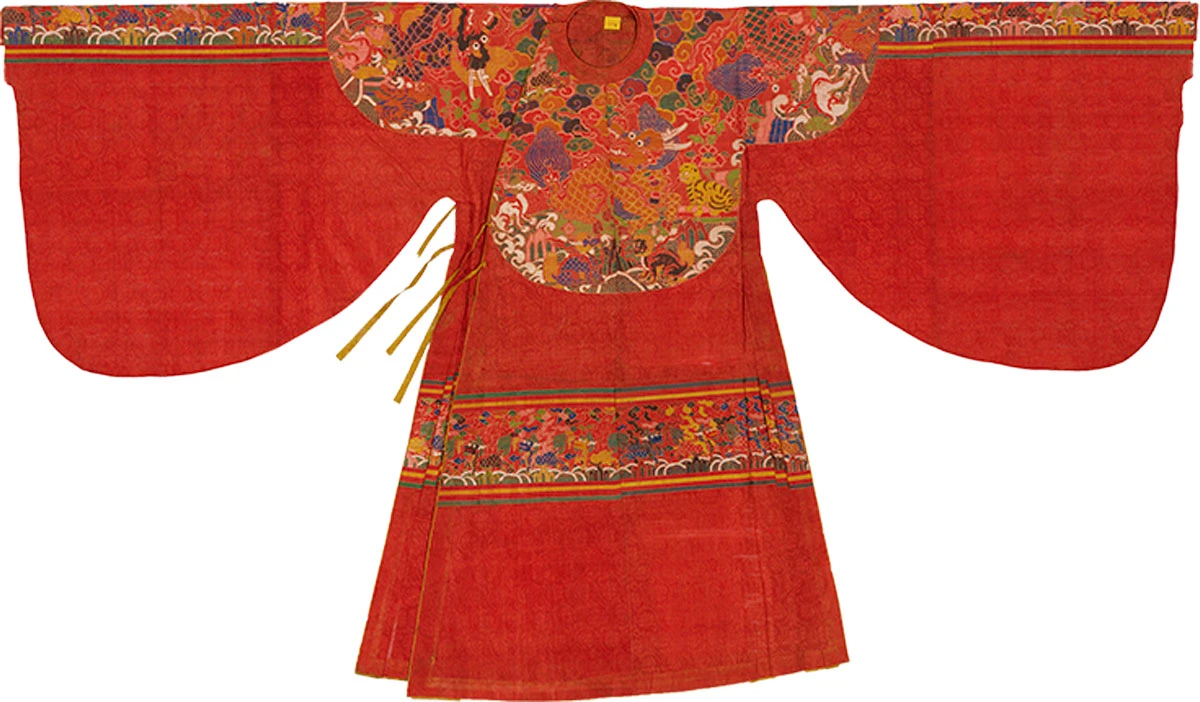

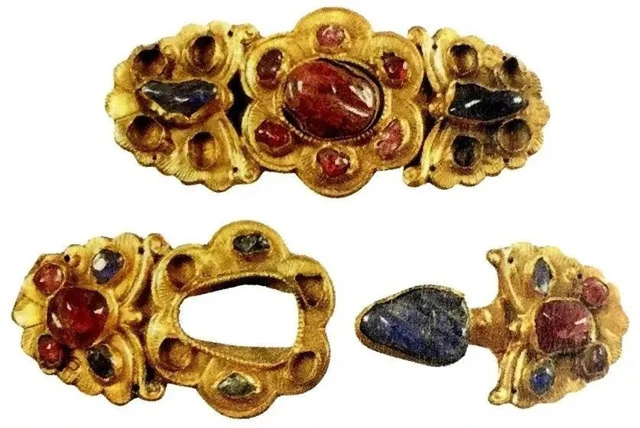
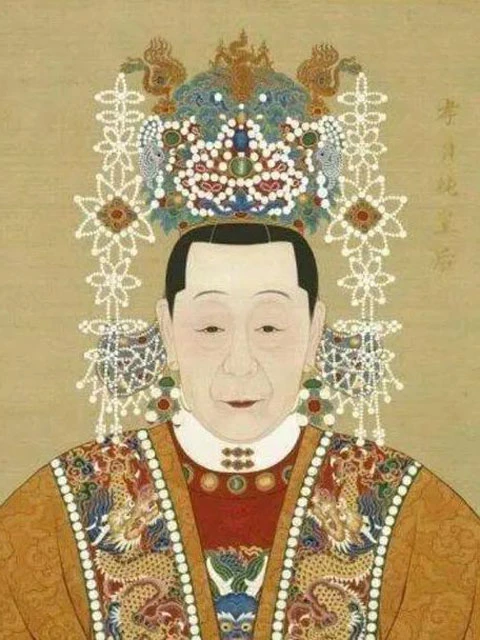
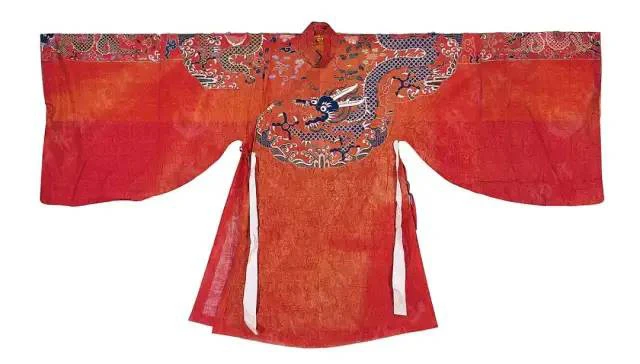
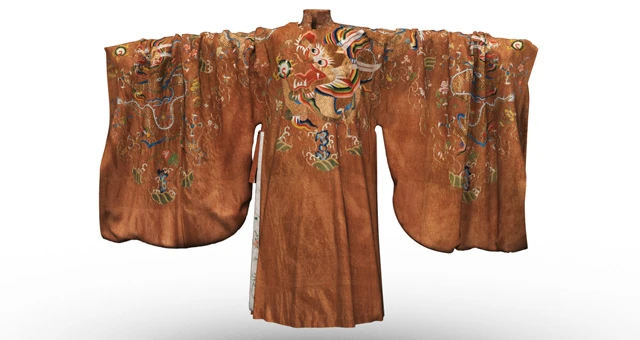
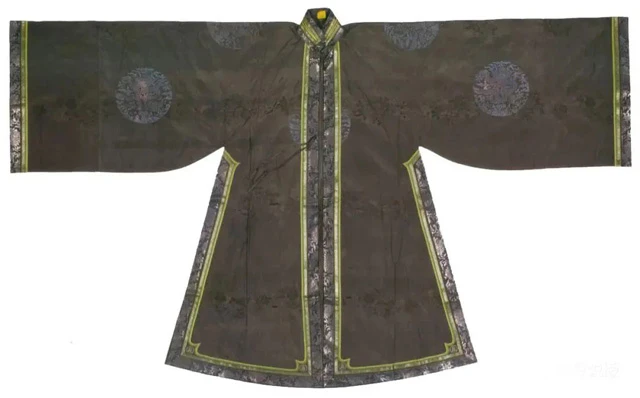
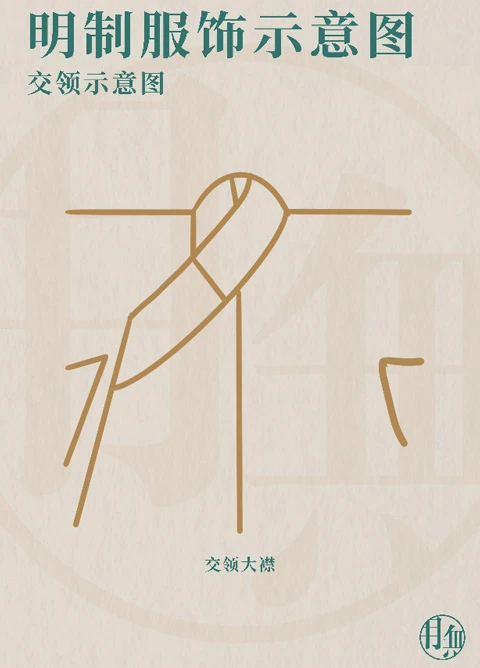

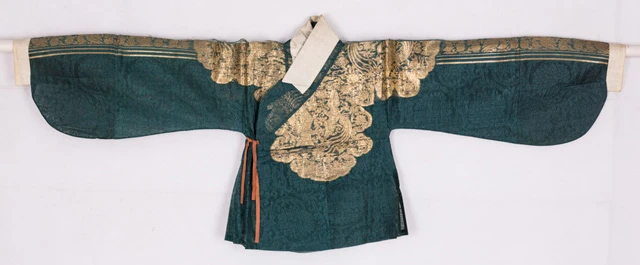
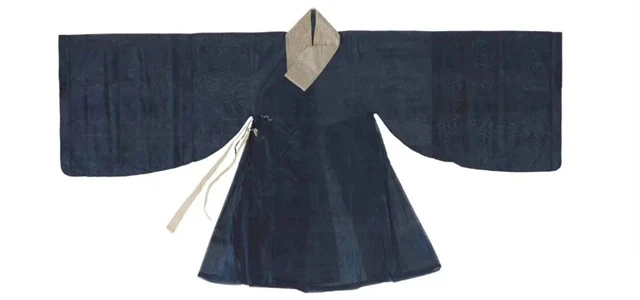
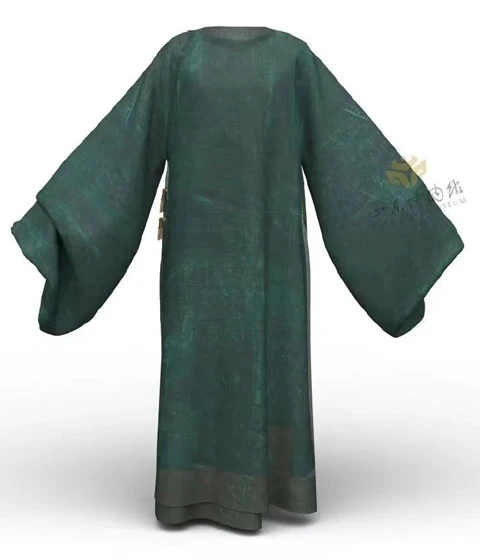
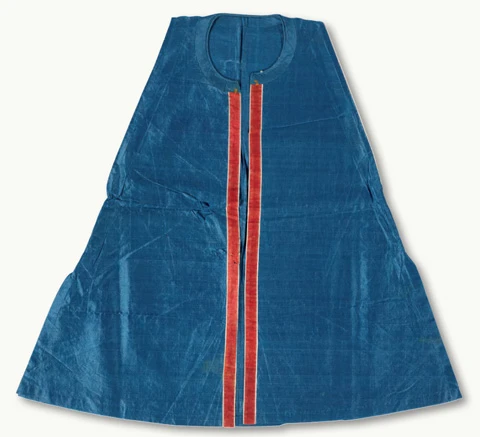
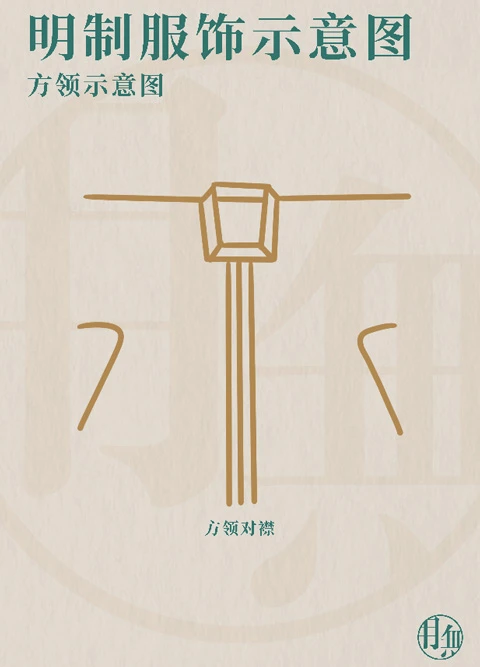
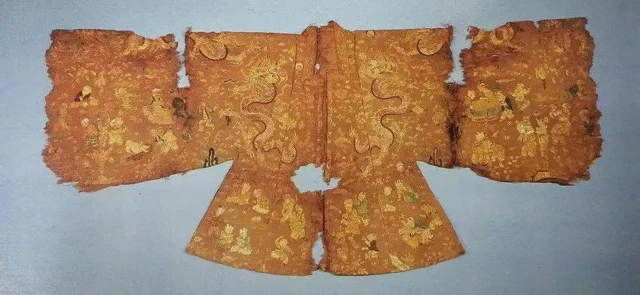
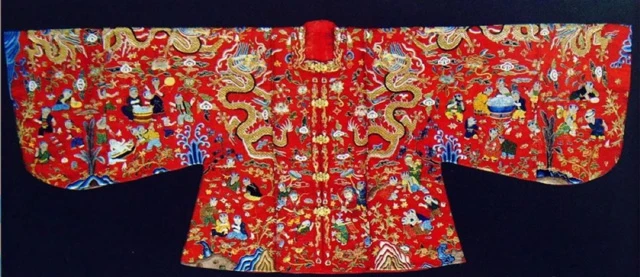

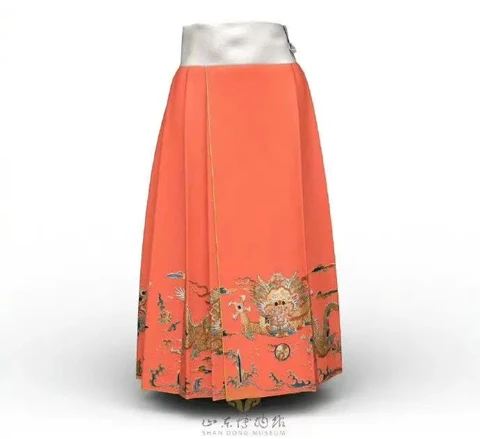
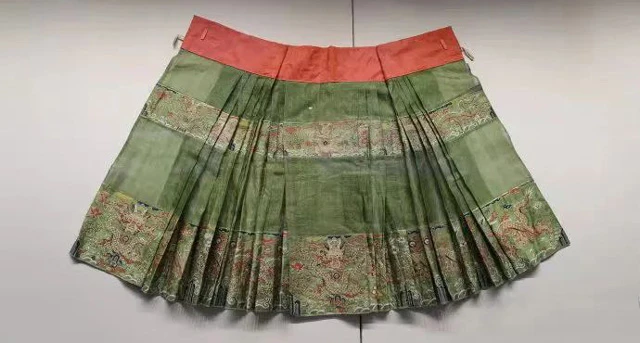
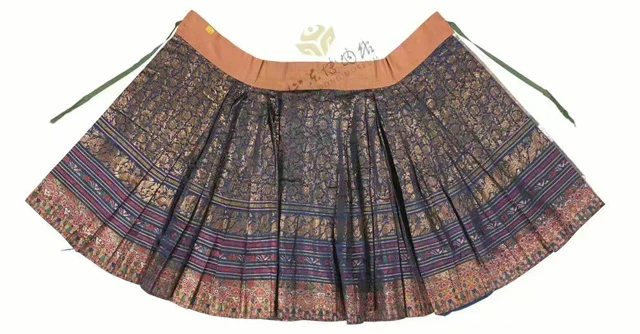

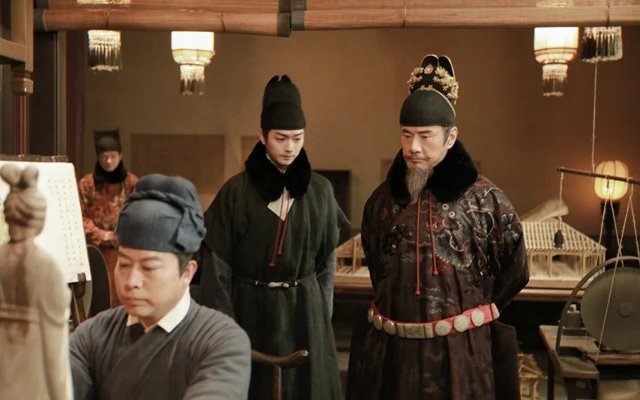
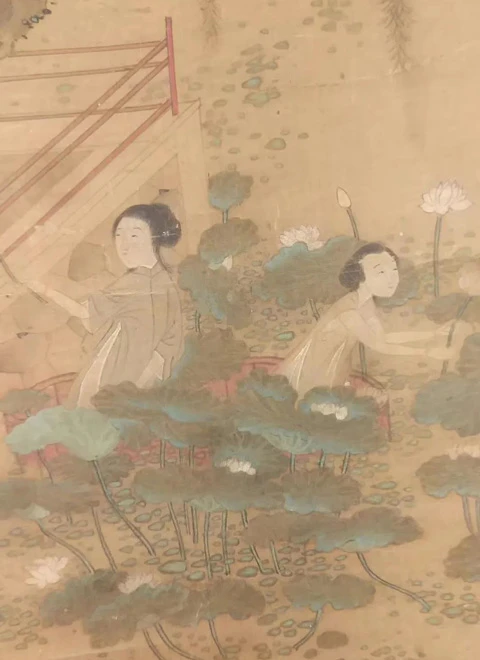
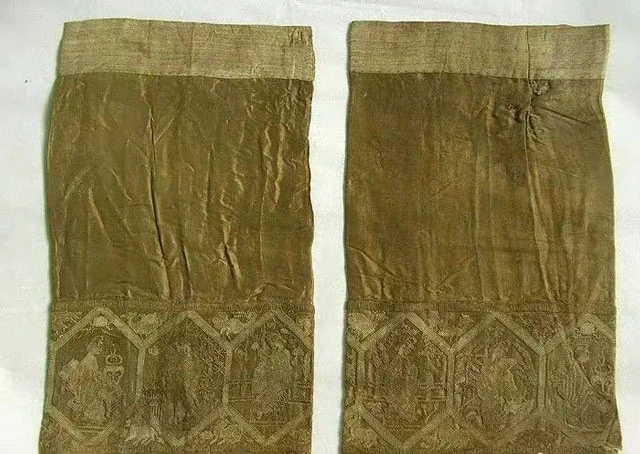
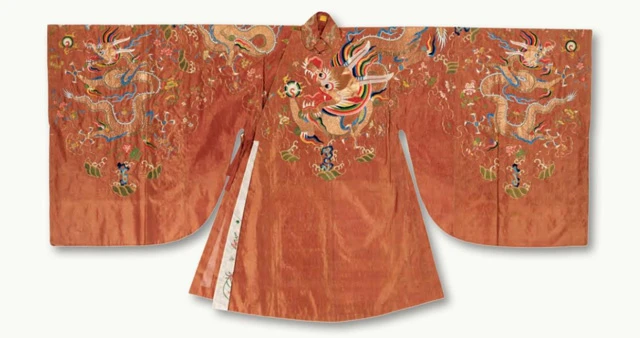
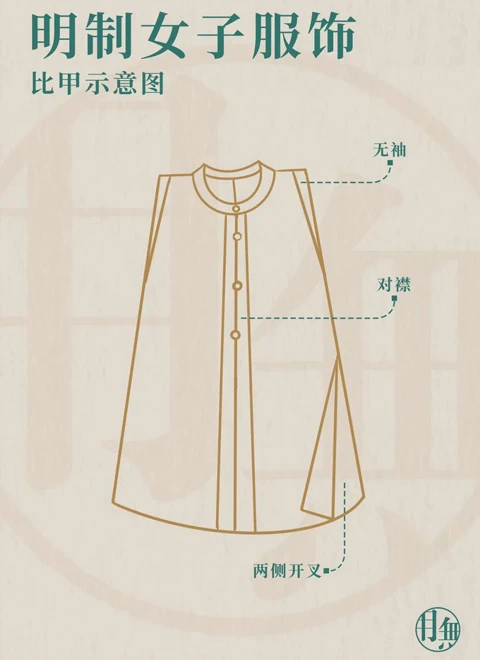
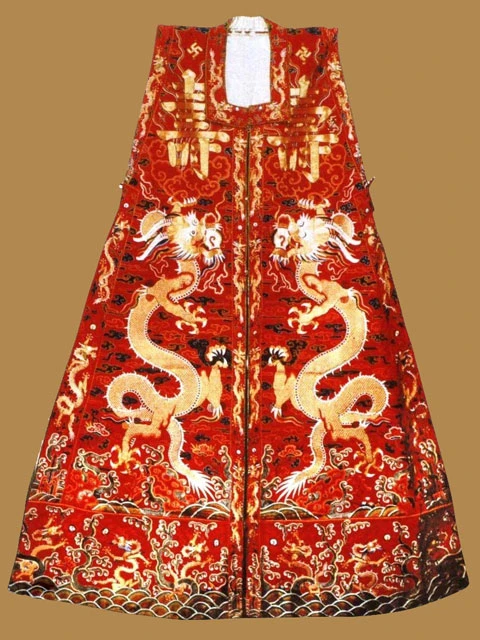
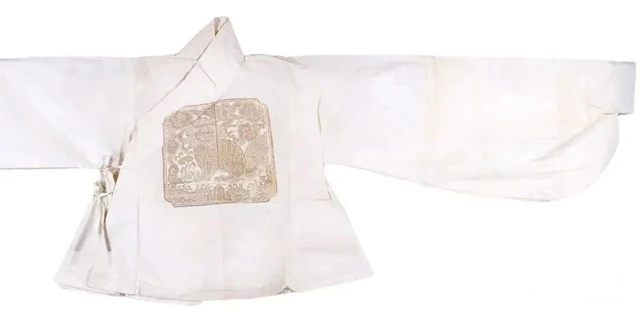
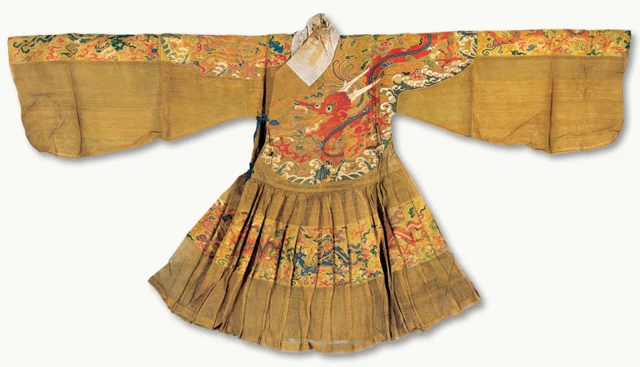
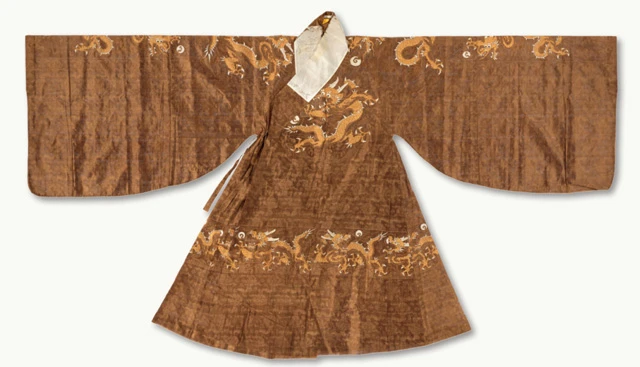
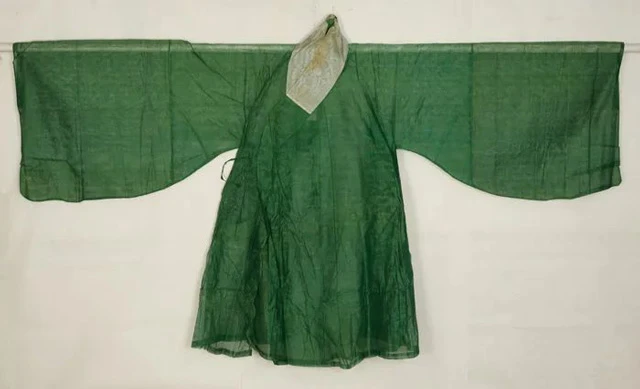

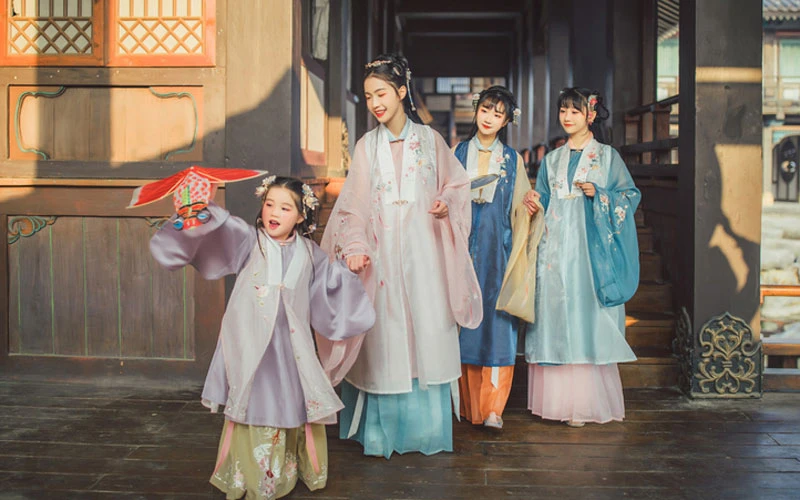
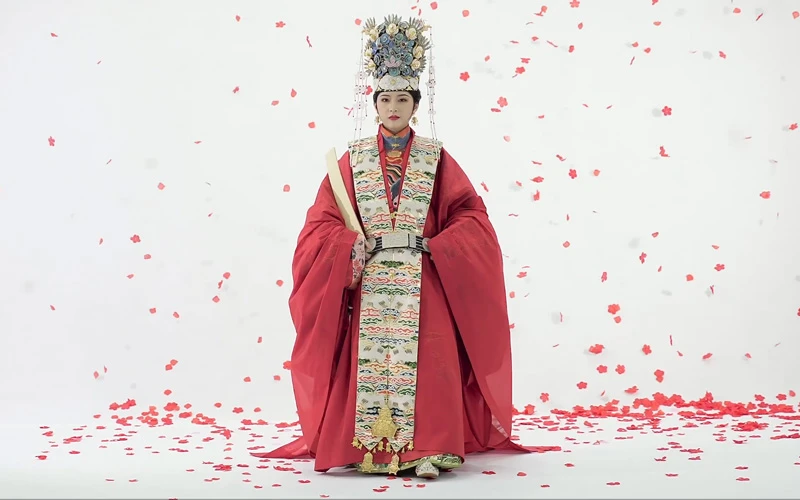
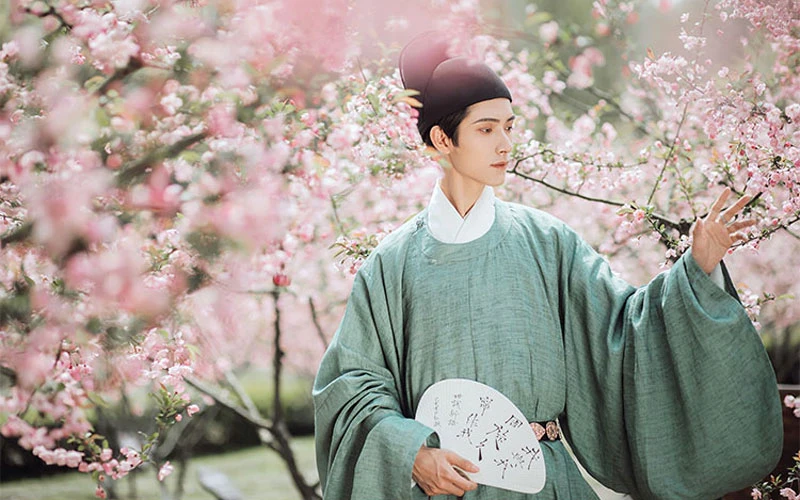

Great article. Thanks
Thank you for such detailed explanation!
A new study of Ming dynasty hanfu for me
Dari dinasti ke dinasti semua ikut berkembang
Sangat bervariatif gayanya